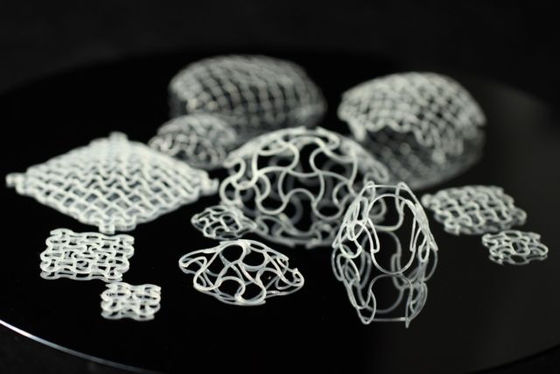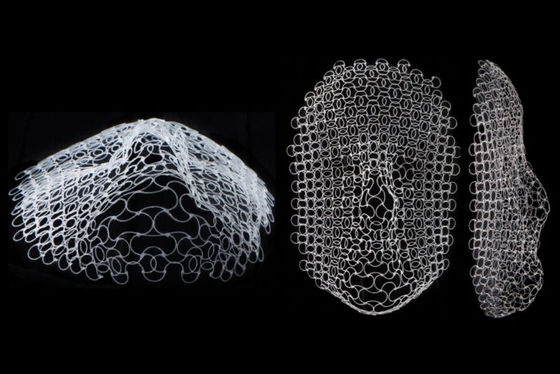MIT researchers invent a shape change material that changes to the contour of the human face due to temperature change

Although originally a flat plane, researchers at the Massachusetts Institute of Technology (MIT) invented a special lattice structure that gradually changes to the same shape as the human face due to changes in ambient temperature .
Shape-shifting structured lattices via multimaterial 4D printing | PNAS
MIT scientists made a shape-shifting material that morphs into a human face | Ars Technica
https://arstechnica.com/science/2020/01/just-change-the-temperature-to-make-this-material-transform-into-a-human-face/
The technology expected to come after 3D printing is ' 4D material (four-dimensional material)'. 4D materials output the material continuously in layers under the control of a computer like 3D printing, but the difference is that the output material changes its shape with time and temperature. . Researchers at MIT have created much more complex 'human face outlines' than previously created as 4D materials, and have published their work at the National Academy of Sciences bulletin .
MIT researcher Wim van Rees has succeeded in transforming thin flat sheets into shapes such as 'spheres', 'domes', and 'human face contours' with changes in ambient temperature.

Changing a flat sheet into the contours of a human face required a material that could expand and contract beyond its original surface area, and was considered to be extremely difficult to achieve. However, Rees and his team came up with the idea of using a grid structure like a mesh. By creating this lattice structure with a 'rubber-like material that expands when the temperature rises', it has become possible to adapt to large changes such as 'the contour of a human face from a plane'.
In addition, the research team mapped the values required for the plane to change to the contour of a human face on a virtual map. By creating an algorithm that converts the numerical values on the virtual map to a plane, the mesh-shaped sheet is designed to be able to expand differently for each part. In the simulation, we succeeded in reproducing the nose and orbit on a flat sheet as the temperature changed.
Then, the research team actually output the invented mesh structure with a 3D printer, heated and cured in an oven, and cooled to room temperature with brine. We have confirmed that this sheet actually changes its shape from a flat surface to the contour of the face as the temperature changes.

The research team has created a lattice structure containing a conductive liquid metal, and has succeeded in creating a shape-change sheet that can change its shape by changing the frequency.
Regarding the use of the shape change sheet invented by the MIT research team, Ars Technica of overseas technology media said, `` Automatically deployable tents, deformable telescope lenses, artificial tissue scaffolds, soft robot engineering using soft materials And so on. Rees, who participated in the research, said, 'I want this material to be used, for example, for a robot jellyfish that changes its shape so that it can swim when put in water. If this material is used as an actuator such as an artificial muscle, Will change the shape of the robot. This will bring a completely new design to soft robotics. '
Related Posts:
in Science, Posted by logu_ii







